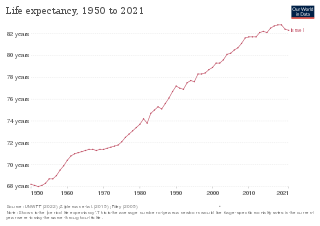Related Research Articles

Tobacco smoking is the practice of burning tobacco and ingesting the resulting smoke. The smoke may be inhaled, as is done with cigarettes, or simply released from the mouth, as is generally done with pipes and cigars. The practice is believed to have begun as early as 5000–3000 BC in Mesoamerica and South America. Tobacco was introduced to Eurasia in the late 17th century by European colonists, where it followed common trade routes. The practice encountered criticism from its first import into the Western world onwards but embedded itself in certain strata of a number of societies before becoming widespread upon the introduction of automated cigarette-rolling apparatus.

A hookah, shisha, or waterpipe is a single- or multi-stemmed instrument for heating or vaporizing and then smoking either tobacco, flavored tobacco, or sometimes cannabis, hashish and opium. The smoke is passed through a water basin—often glass-based—before inhalation.

Tobacco products, especially when smoked or used orally, have negative effects on human health. Researchers have addressed concerns about these effects for a long time. They have focused primarily on cigarette smoking.

Prevalence of tobacco use is reported by the World Health Organization (WHO), which focuses on cigarette smoking due to reported data limitations. Smoking has therefore been studied more extensively than any other form of consumption.

A hookah lounge is an establishment where patrons share shisha from a communal hookah or from one placed at each table or a bar.

Health in Saudi Arabia refers to the overall health of the population of Saudi Arabia. Government prioritization of preventive healthcare and environmental health began in 1925 following the establishment of a public health department. The decision to create it came after a royal decree from King Abdul Aziz Al-Saud. The government announced plans to increase taxes on soft drinks and tobacco in December 2015.

Health in Israel is generally considered good.

Muʽassel, or maassel, is a syrupy tobacco mix containing molasses, vegetable glycerol and various flavourings which is smoked in a hookah, a type of waterpipe. It is also known as "shisha".

Tobacco control is a field of international public health science, policy and practice dedicated to addressing tobacco use and thereby reducing the morbidity and mortality it causes. Since most cigarettes and cigars and hookahs contain/use tobacco, tobacco control also concerns these. E-cigarettes do not contain tobacco itself, but (often) do contain nicotine. Tobacco control is a priority area for the World Health Organization (WHO), through the Framework Convention on Tobacco Control. References to a tobacco control movement may have either positive or negative connotations, depending upon the commentator.

Tobacco has a long cultural, economic, and social impact on the United States. Tobacco cultivation in Jamestown, Virginia, in 1610 lead to the expansion of British colonialism in the Southern United States. As the demand for Tobacco grew in Europe, further colonization in British America and Tobacco production saw a parallel increase. Tobacco use became normalized in American society and was heavily consumed before and after American independence.

Smoking in Syria is steadily increasing in popularity amongst the Syrian population, mainly in the forms of cigarettes or narghiles. In Syria, the General Organization of Tobacco manages the growth and exportation of tobacco products. Syrians collectively spend about $600 million per year on tobacco consumption. As of 2010, 20% of women and 60% of men smoke and 98% of the overall population is affected by passive smoking. Narghiles and cigarettes are the two main forms of tobacco consumption. Despite the assumption that smoking, specifically the narghile, is embedded in Syrian culture, this phenomenon has only recently become widespread. Health officials are currently working on smoking cessation programs and policies, to remove this idea that smoking in Syria is an essential part of the culture, to educate regarding health effects, and to prevent citizens from smoking in public places.

The use of tobacco products in Egypt is widespread. It is estimated that approximately twenty percent of the population uses tobacco products daily. Cigarettes are the most common form of tobacco consumption in Egypt, with an estimated twenty billion cigarettes smoked annually in the country. After cigarettes, shisha water-pipes are the most common form of tobacco consumption.

SmokinginCanada is banned in indoor public spaces, public transit facilities and workplaces, by all territories and provinces, and by the federal government. As of 2010, legislation banning smoking within each of these jurisdictions is mostly consistent, despite the separate development of legislation by each jurisdiction. Notable variations between the jurisdictions include: whether, and in what circumstances ventilated smoking rooms are permitted; whether, and up to what distance away from a building is smoking banned outside of a building; and, whether smoking is banned in private vehicles occupied by children.
Smoking in South Korea has decreased overall for both men and women in the past decades. However, a high prevalence of tobacco use is still observed, especially with the rise of novel tobacco products such as e-cigarettes and heat-not-burn tobacco products. There are socioeconomic inequalities in smoking prevalence according to gender, income, education, and occupational class. Advocates call for measures to reduce the smoking rates and address smoking inequalities using a combination of monitoring and tobacco control policies. These measures include significant price hikes, mandatory warning photos on cigarette packs, advertising bans, financial incentives, medical help for quitting, and complete smoking bans in public places.
Tobacco smoking in Pakistan is legal, but under certain circumstances is banned. If calculated on per day basis, 177 million cigarettes per day were consumed in FY-14. According to the Pakistan Demographic Health Survey, 46 per cent men and 5.7 per cent women smoke tobacco. The habit is mostly found in the youth of Pakistan and in farmers, and is thought to be responsible for various health problems and deaths in the country. Pakistan has the highest consumption of tobacco in South Asia.

Smoking in India is one of the oldest industries and provides employment to more than five million people directly and indirectly. India is the second-largest producer of tobacco in the world. Smoking has been known since at least 2000 BC when cannabis was smoked and is first mentioned in the Atharvaveda. Fumigation (dhupa) and fire offerings (homa) are prescribed in the Ayurveda for medical purposes and have been practiced for at least 3,000 years while smoking, dhumrapana has been practiced for at least 2,000 years. Tobacco was introduced to India in the 17th century. It later merged with existing practices of smoking.
Montenegro is a country with an area of 13,812 square kilometres and a population of 620,029, according to the 2011 census. The country is bordered by Croatia, the Adriatic Sea, Bosnia, Herzegovina, Serbia, Kosovo and Albania. The most common health issues faced are non-communicable diseases accounting for 95% of all deaths. This is followed by 4% of mortality due to injury, and 1% due to communicable, maternal, perinatal and nutritional conditions. Other health areas of interest are alcohol consumption, which is the most prevalent disease of addiction within Montenegro and smoking. Montenegro has one of the highest tobacco usage rates across Europe. Life expectancy for men is 74 years, and life expectancy for women is 79.

Tobacco policy in Armenia is the attempt by the Armenian authorities to regulate smoking in Armenia. Tobacco laws and regulations are controlled by the Ministry of Health of Armenia. Armenian men tend to be the most common tobacco users, as 42.5% of men over the age of 15 smoke.
Smoking in Latvia is common, with a rate higher than the OECD average, and Latvian men are among the heaviest smokers in the European Union. One in four Latvians smoke, as compared to one in five in the rest of the European Union. While the overall smoking rate in Latvia has decreased in recent years, it is considered a significant factor in the country's significant health challenges, particularly with regard to preventable diseases such as heart disease, diabetes, and cancer.
Smoking in Australia is restricted in enclosed public places, workplaces, in areas of public transport and near underage events, except new laws in New South Wales that ban smoking within ten metres of children's play spaces.
References
- ↑ "Bahrain". World Health Organization. Retrieved 22 December 2015.
- 1 2 3 "Combatting HIV/AIDS and other diseases in Bahrain" (PDF). United Nations Development Program. Archived from the original (PDF) on January 17, 2013. Retrieved 26 June 2012.
- ↑ "Immunization Profile – Bahrain". World Health Organization. Archived from the original on May 23, 2011. Retrieved 26 June 2012.
- ↑ "Country Profile- Bahrain" (PDF). WHO. Retrieved 26 June 2012.
- ↑ "Noncommunicable diseases in Bahrain" (PDF). World Health Organization. Retrieved 26 June 2012.
- ↑ "Features of sickle-cell disease in Bahrain". Gulf Genetic Centre. Archived from the original on 13 September 2012. Retrieved 26 June 2012.
- ↑ "Bahrain: Nutrition Country Profiles".
- ↑ "Diabetes in Bahrain". TimeOut Bahrain. Retrieved 26 June 2012.
- ↑ Musaiger, Abdulrahman O.; Al‐Jedah, Jassim H.; D'Souza, Reshma (24 July 2007). "Nutrient composition of foods provided by school canteens in Bahrain". Nutrition & Food Science. 37 (4): 246–253. doi:10.1108/00346650710774613.
- ↑ "Smoking ban in Bahrain | Time Out Bahrain". Time Out Bahrain. 2009-04-28. Retrieved 2024-03-13.
- 1 2 3 4 5 6 Bahrain – Law No. 8. PDF. 2009. https://www.tobaccocontrollaws.org/files/live/Bahrain/Bahrain%20-%20Law%20No.%208.pdf
- ↑ Borgan, Saif M; Jassim, Ghufran; Marhoon, Zaid A; Almuqamam, Mohamed A; Ebrahim, Mohamed A; Soliman, Peter A (December 2014). "Prevalence of tobacco smoking among health-care physicians in Bahrain". BMC Public Health. 14 (1): 931. doi: 10.1186/1471-2458-14-931 . PMC 4165905 . PMID 25200373.
- ↑ Bahrain: Smoking in public. (2016). Retrieved from https://www.tripadvisor.com/Travel-g293996-c67179/Bahrain:Smoking.In.Public.html
- 1 2 Hamadeh, Randah R.; Ahmed, Jamil; Al Kawari, Maha; Bucheeri, Sharifa (December 2018). "Smoking behavior of males attending the quit tobacco clinics in Bahrain and their knowledge on tobacco smoking health hazards". BMC Public Health. 18 (1): 199. doi: 10.1186/s12889-018-5104-7 . PMC 5789601 . PMID 29378543.
- ↑ Bahrain issues strict anti-smoking laws. Retrieved from http://www.mybahrain.net/viewtravelnews.asp?ID=509
- ↑ Žaloudíková, Iva; Hrubá, Drahoslava; Samara, Ibrahim (1 March 2012). "Parental Education and Family Status - Association with Children's Cigarette Smoking". Central European Journal of Public Health. 20 (1): 38–44. doi: 10.21101/cejph.a3652 . PMID 22571015. ProQuest 1011325898.
- ↑ Hamadeh, Randah Ribhi; Ahmed, Jamil; Al-Kawari, Maha; Bucheeri, Sharifa (December 2017). "Quit tobacco clinics in Bahrain: smoking cessation rates and patient satisfaction". Tobacco Induced Diseases. 15 (1): 7. doi: 10.1186/s12971-017-0115-1 . PMC 5251216 . PMID 28127273.
- ↑ Guide to Driving in Bahrain: Rules, Laws and Regulations. (n.d.). Retrieved from https://www.autoshippers.co.uk/blog/driving-in-bahrain.htm.